Space shuttle Atlantis, named after the two-masted research vessel used by the Woods Hole Oceanographic Institution between 1930 and 1966, was the fourth space-qualified orbiter to join the fleet. In its construction and use of advanced technologies, Atlantis was very similar to its sister ship Discovery that joined the fleet a year earlier. Atlantis rolled out of Rockwell International’s plant in Palmdale, California, on March 6, 1985, and arrived at NASA’s Kennedy Space Center (KSC) on April 12 after a cross-country ferry flight from Edwards Air Force Base (AFB) in California atop a Shuttle Carrier Aircraft (SCA), a modified Boeing 747. After ground processing, workers mated Atlantis to its External Tank and Solid Rocket Boosters in the Vehicle Assembly Building (VAB) and rolled it out to Launch Pad 39A on Aug. 29.
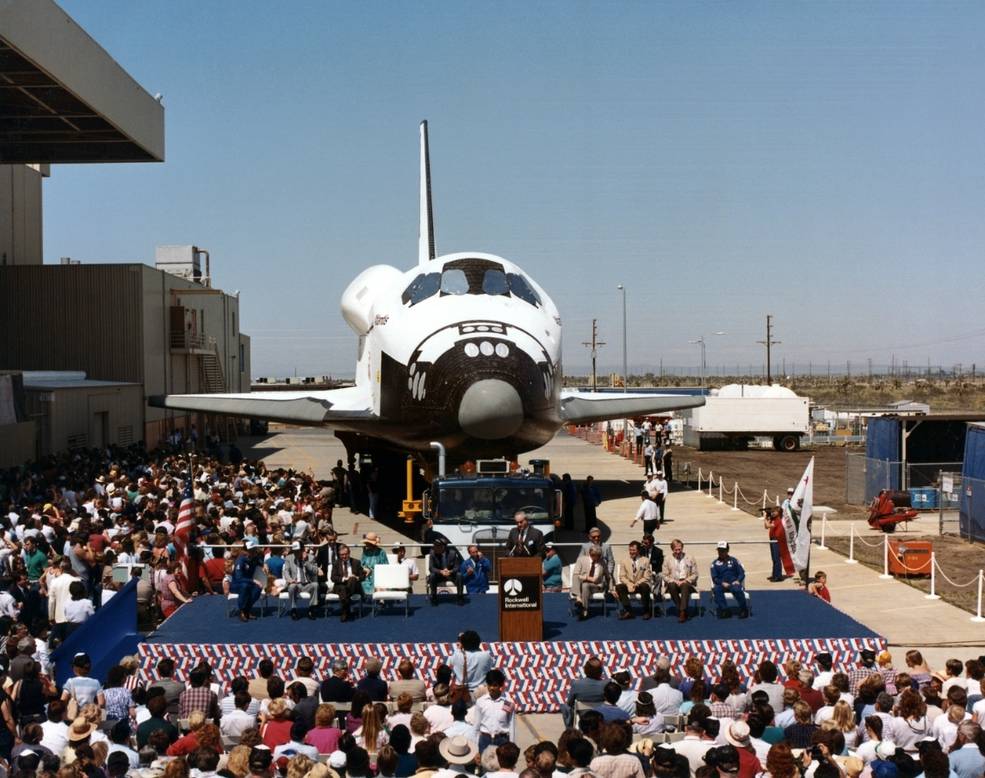
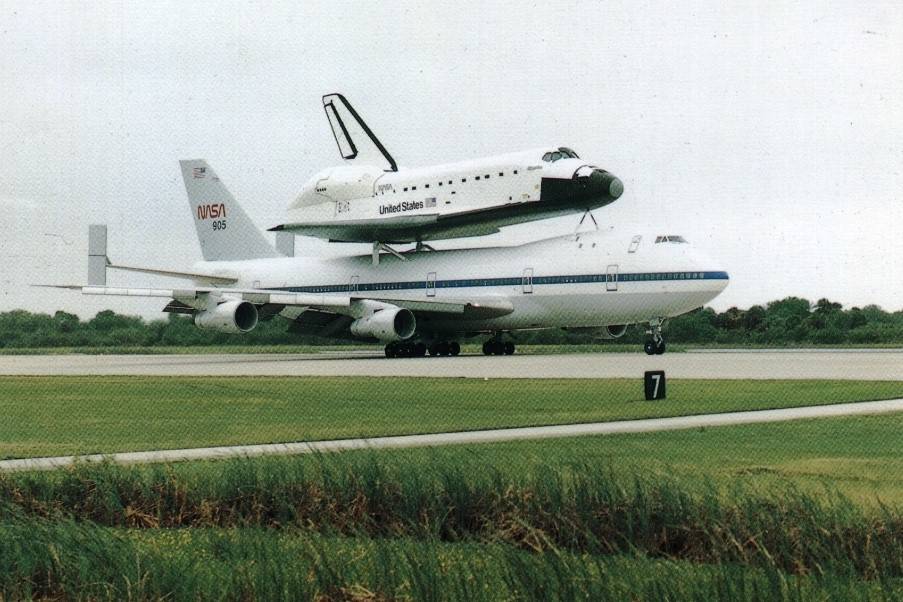
Left: Space Shuttle Atlantis rolls out of Rockwell International’s Palmdale, California, facility. Right: Atlantis atop the Shuttle Carrier Aircraft lands at the Shuttle Landing Facility at NASA’s Kennedy Space Center.
Assigned to Atlantis’ first flight, designated STS-51J, were Commander Karol J. “Bo” Bobko, a veteran of STS-6 (the first flight of space shuttle Challenger) and STS-51D, Pilot Ronald J. Grabe, Mission Specialists Robert L. Stewart and David C. Hilmers, and William A. Pailes, a Department of Defense (DOD) Manned Spaceflight Engineer. Grabe, Hilmers, and Pailes were making their first flight, while Stewart tested the Manned Maneuvering Unit during his first mission, STS-41B. The flight was a classified DOD mission, so few details on the crew’s on-orbit activities are known. In 1998, the DOD declassified the primary payloads, identifying them as a pair of third-generation Defense Space Communications Satellites (DSCS-III) and releasing photographs of their deployment from the shuttle’s payload bay atop an Inertial Upper Stage (IUS).
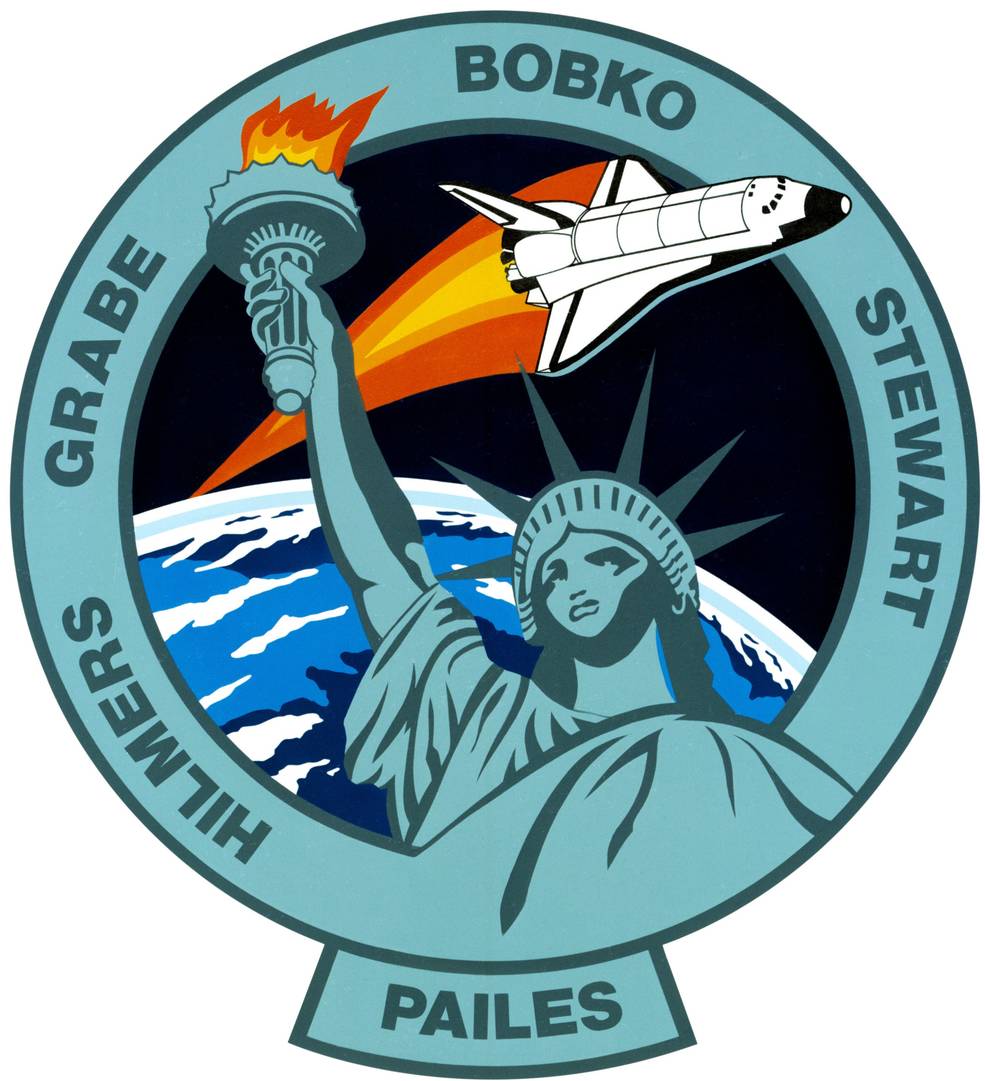
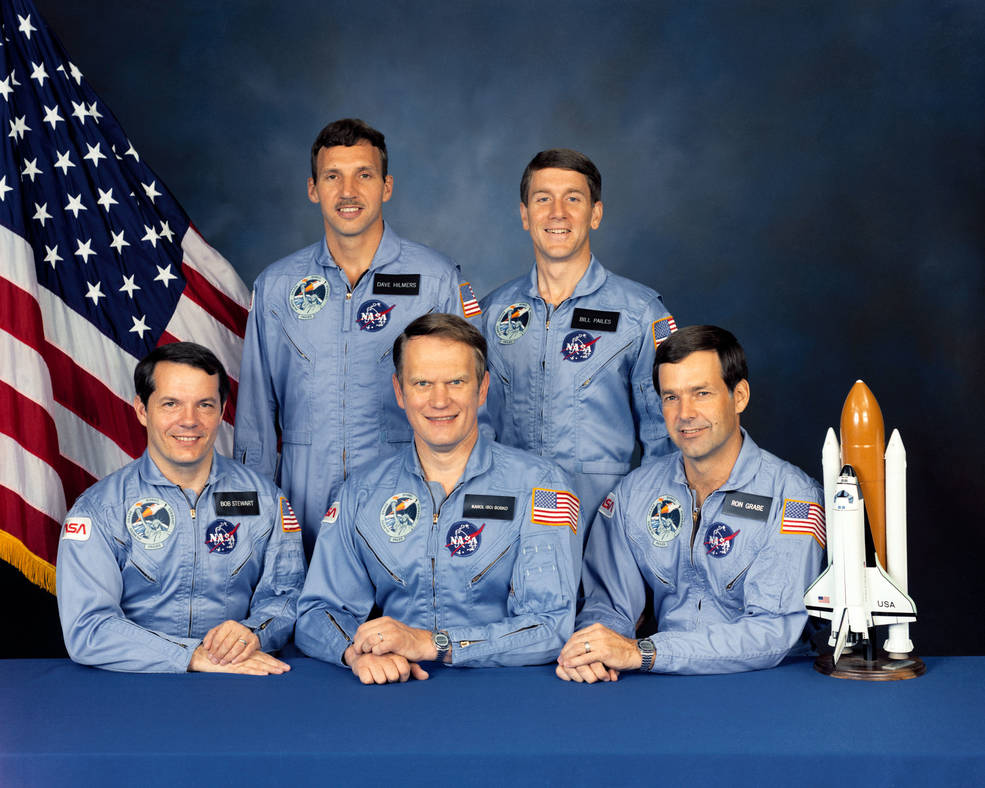
Left: STS-51J crew patch.Right: STS-51J crew photo – Robert L. Stewart, front row left, Karol J. Bobko, and Ronald J. Grabe; David C. Hilmers, back row left, and William A. Pailes.
As required before the first launch of an orbiter, engineers successfully completed the Flight Readiness Firing, an 18-second test of Atlantis’ main engines on Sept. 12. Four days later, the five-member crew successfully completed the Terminal Countdown Demonstration Test, a final dress rehearsal of the countdown right up to the moment of engine ignition. Space shuttle Enterprise arrived at KSC via SCA on Sept. 20 and was put on display next to the Saturn V rocket outside the VAB, in time not only for KSC’s open house the next day but also for Atlantis’ launch, making for a great foreground in liftoff photographs.
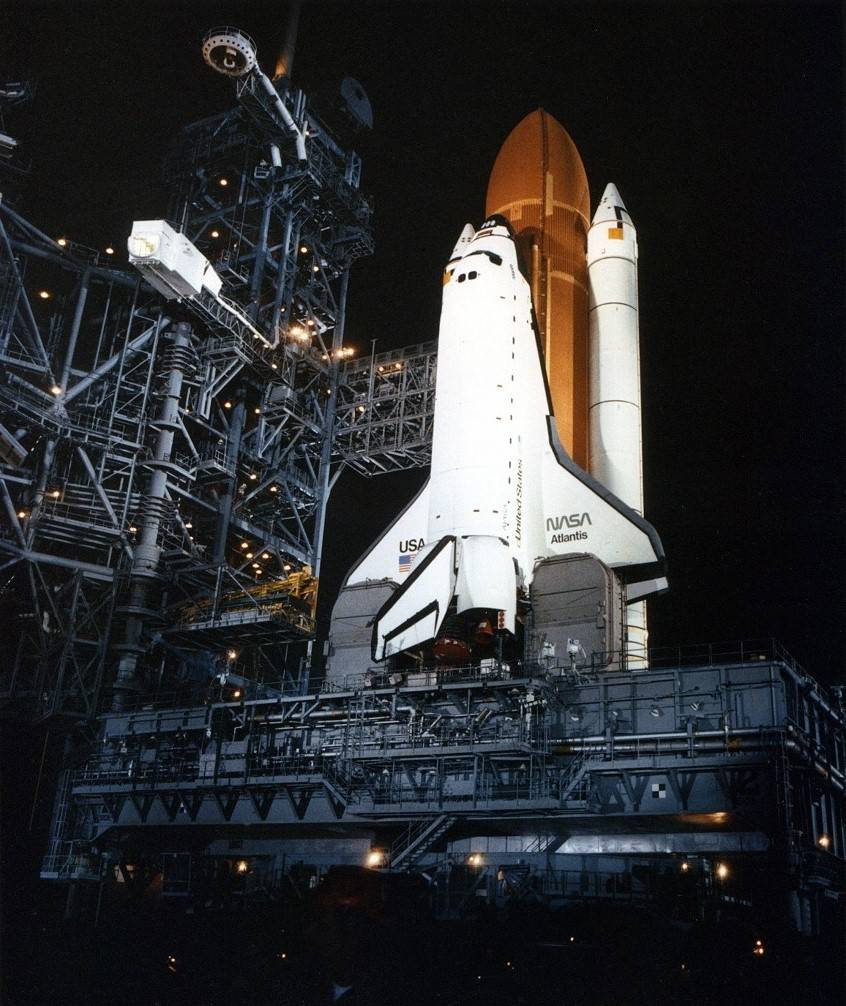
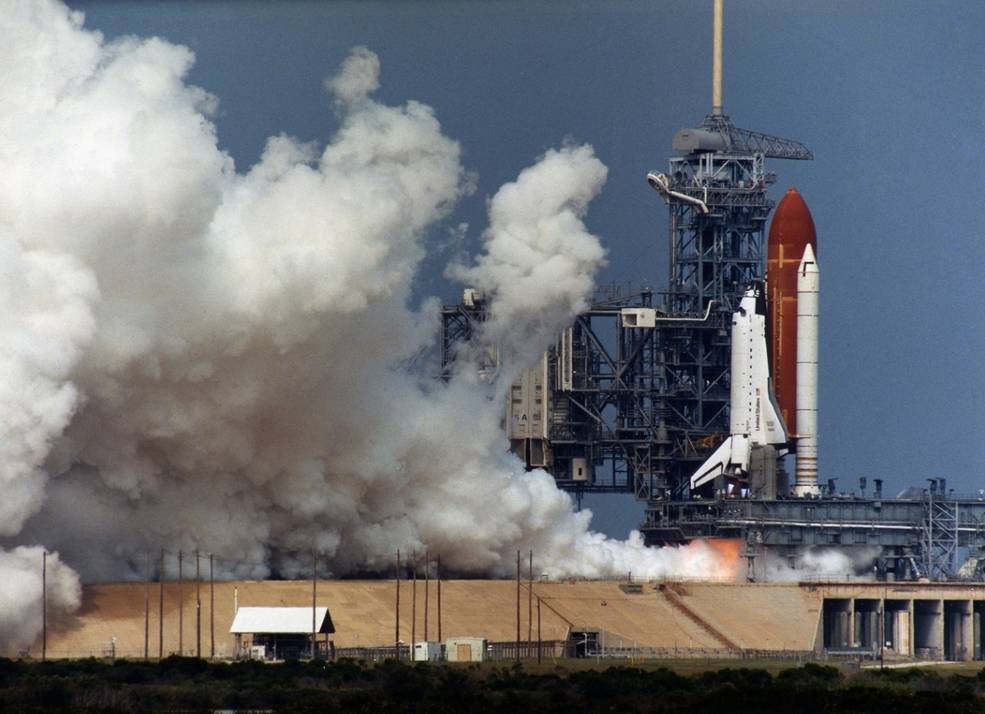
Left: Atlantis after arriving at Launch Pad 39A at NASA’s Kennedy Space Center. Right: Space shuttle Atlantis during its Flight Readiness Firing.
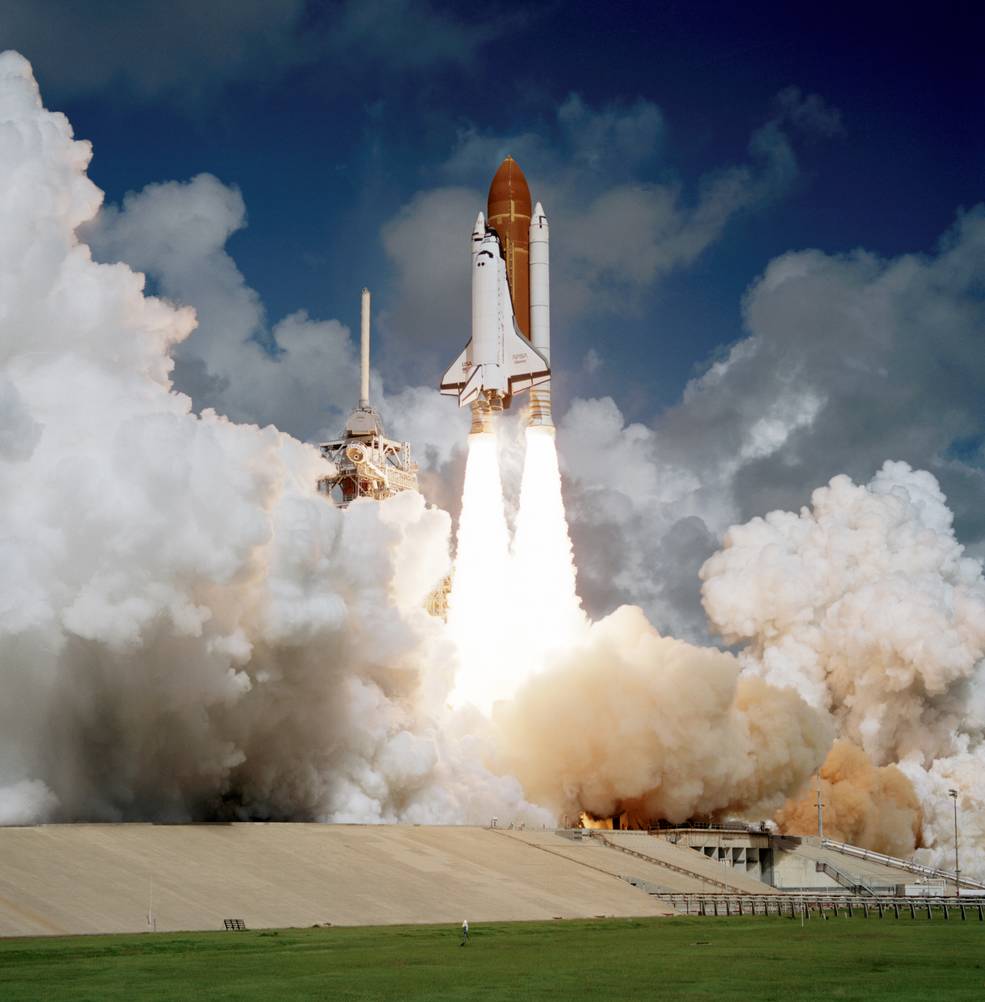
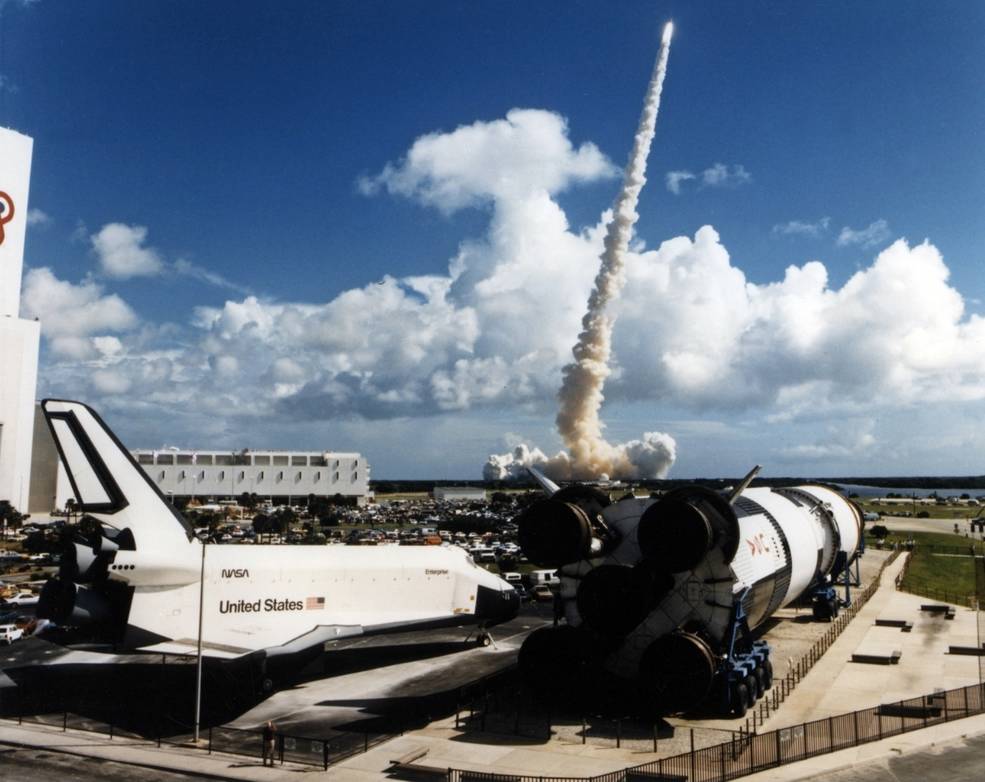
Left: Launch of Atlantis on the STS-51J mission. Right: View of Atlantis during its ascent, with space shuttle Enterprise and a Saturn V rocket on display near the Vehicle
Assembly Building.
On Oct. 3, 1985, Atlantis roared off its launch pad on a pillar of flame and within eight minutes was in orbit around the Earth. In keeping with an agreement between NASA and the DOD, media coverage of the mission stopped at that point. It is believed that the crew deployed the two DCSC-III satellites atop the IUS on the first day in space. The DOD and NASA released very few photographs from the mission other than the usual crew photos and Earth observation images.
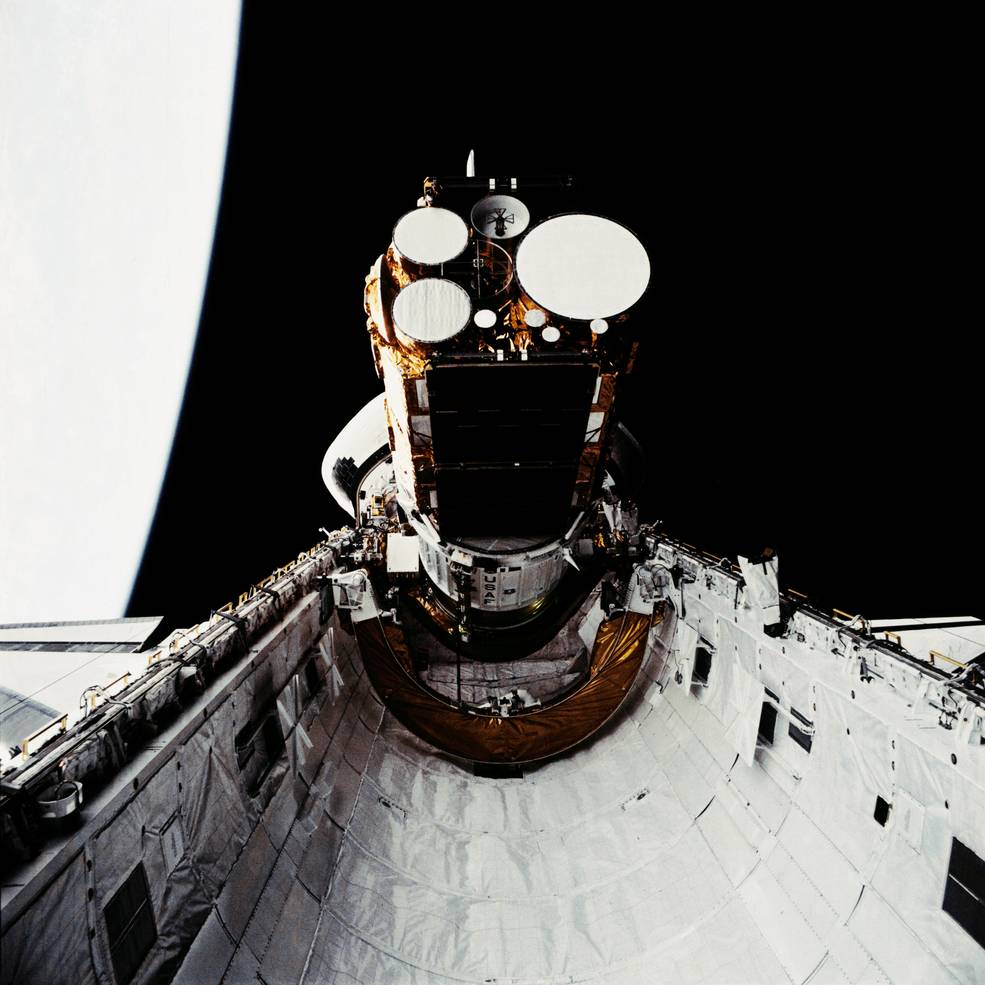
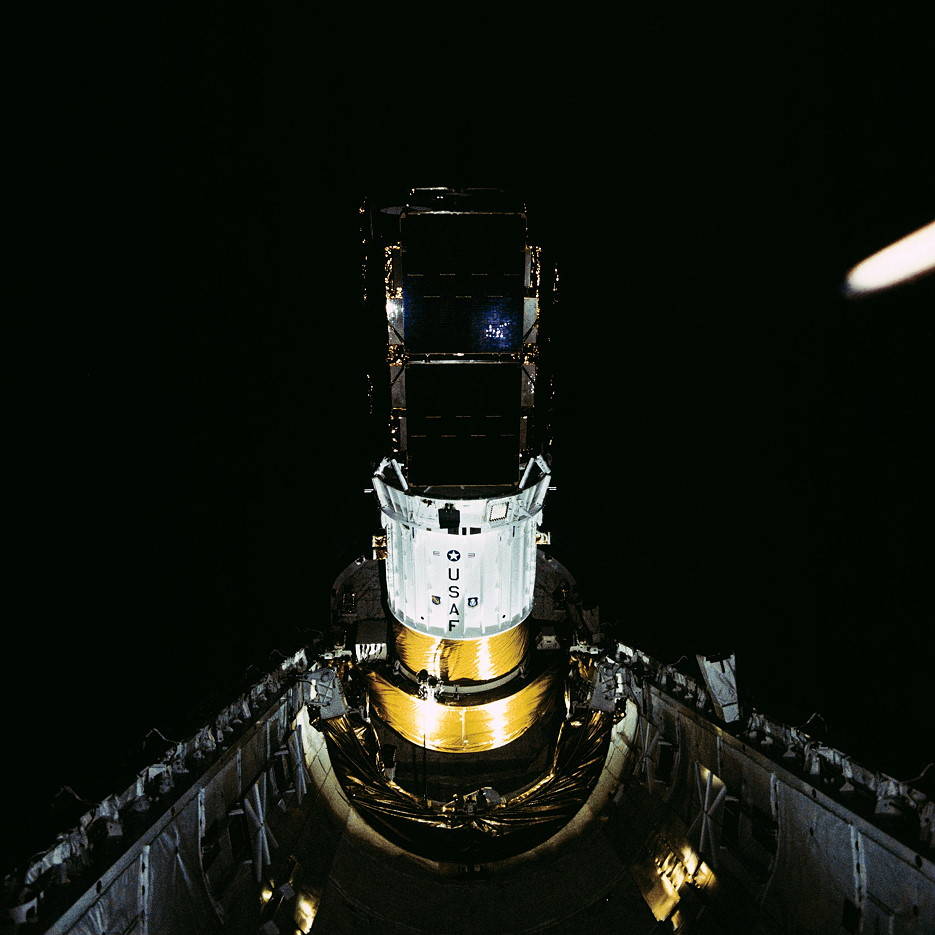
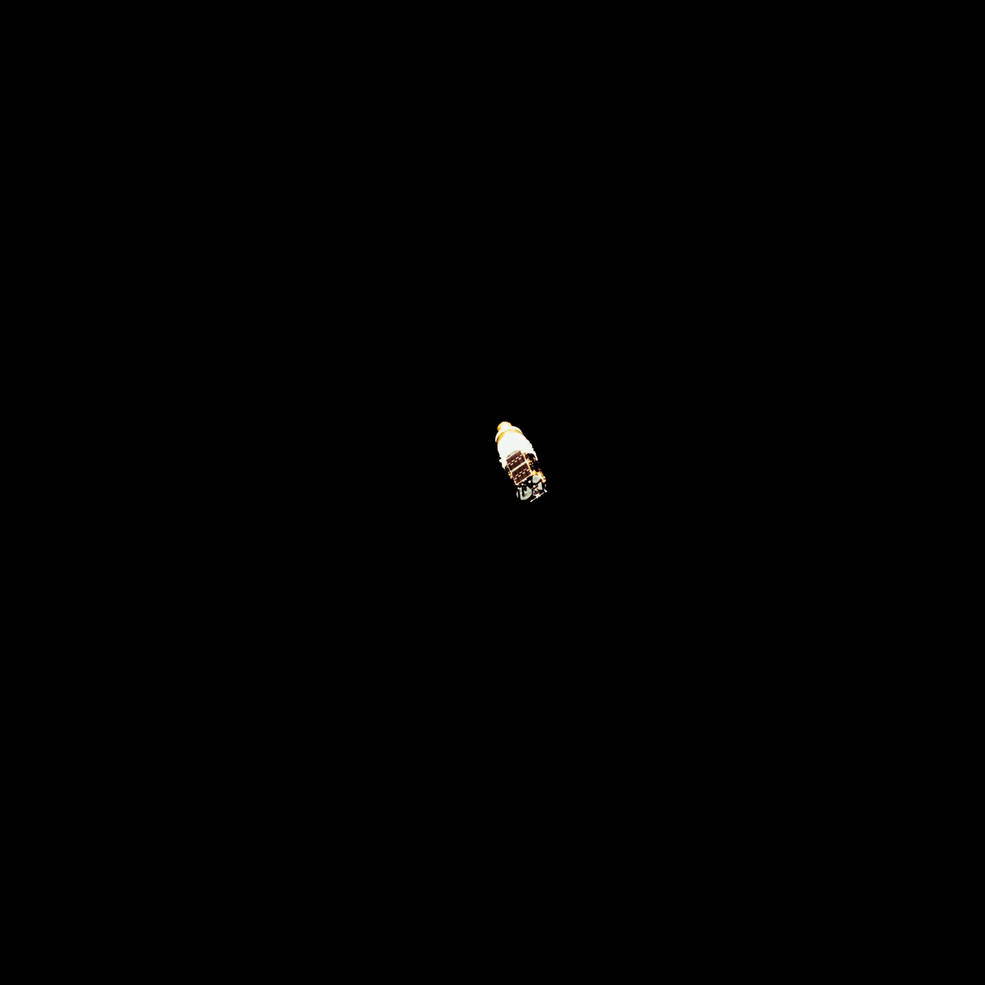
Three views of the deployment from Atlantis’ payload bay of the two Defense Space Communications
Satellites atop the Inertial Upper Stage.
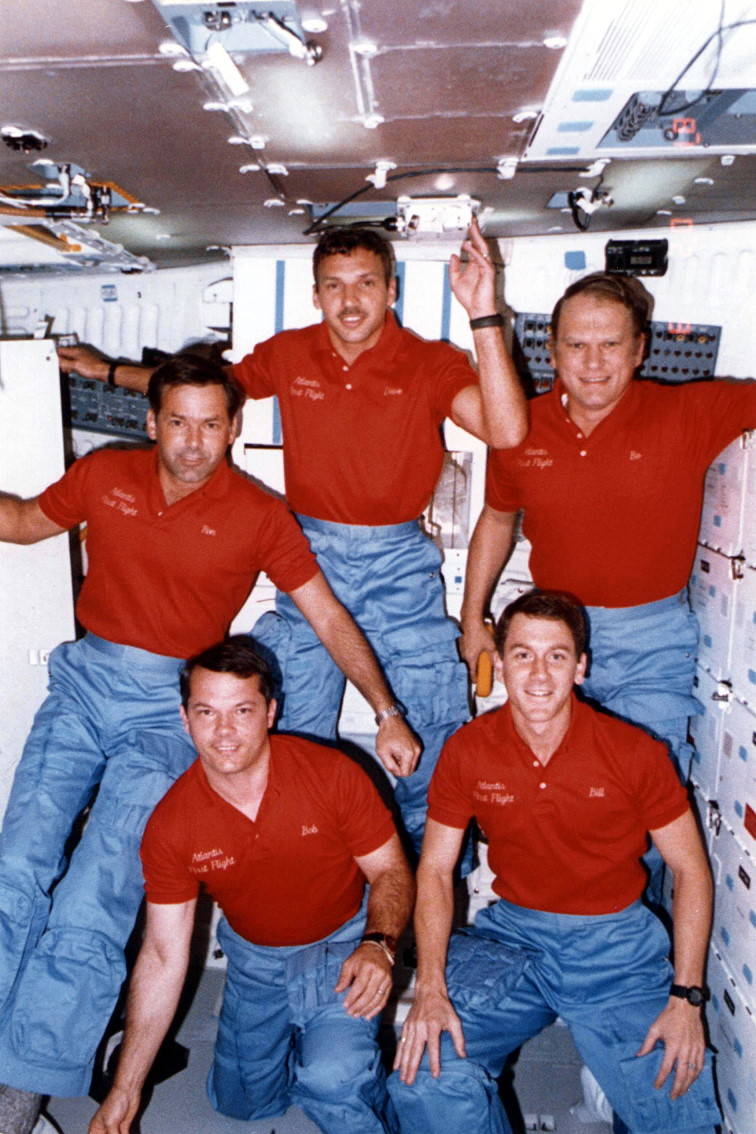
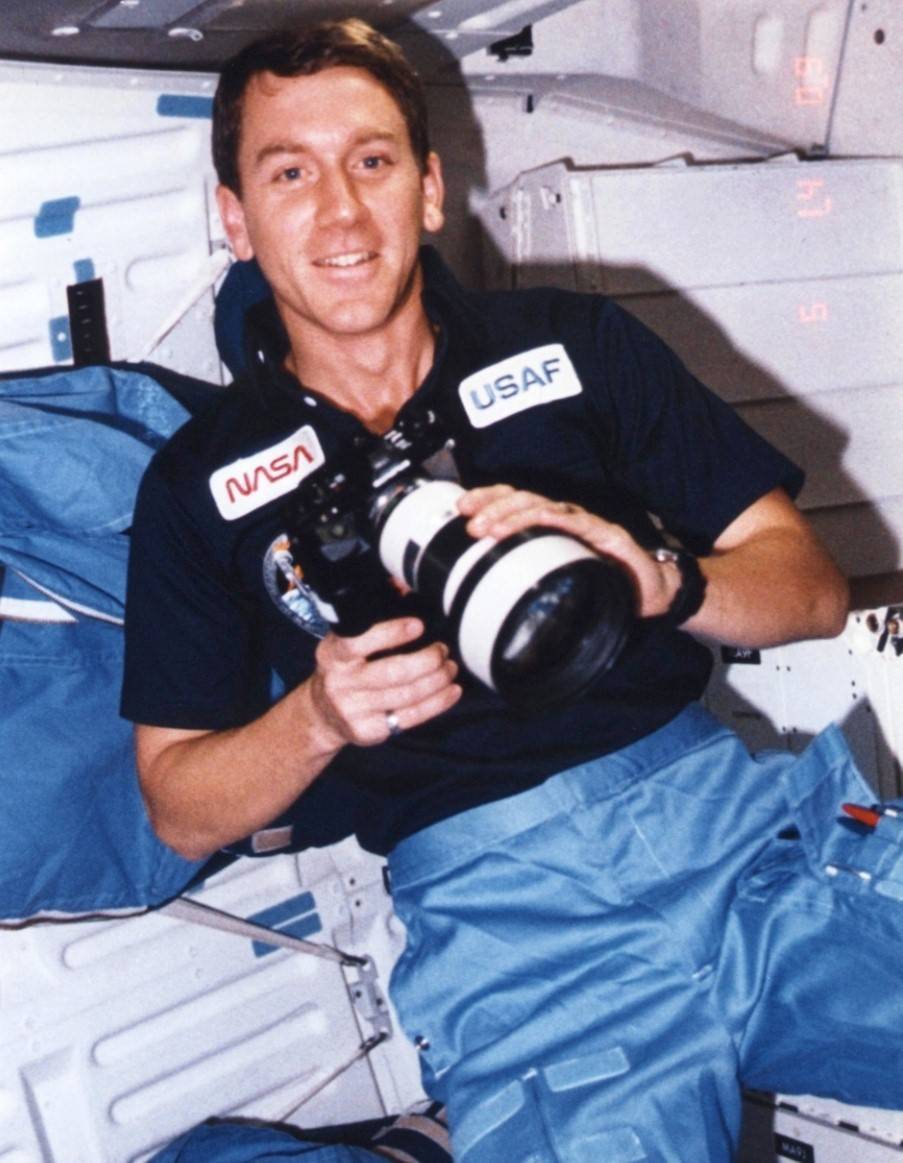
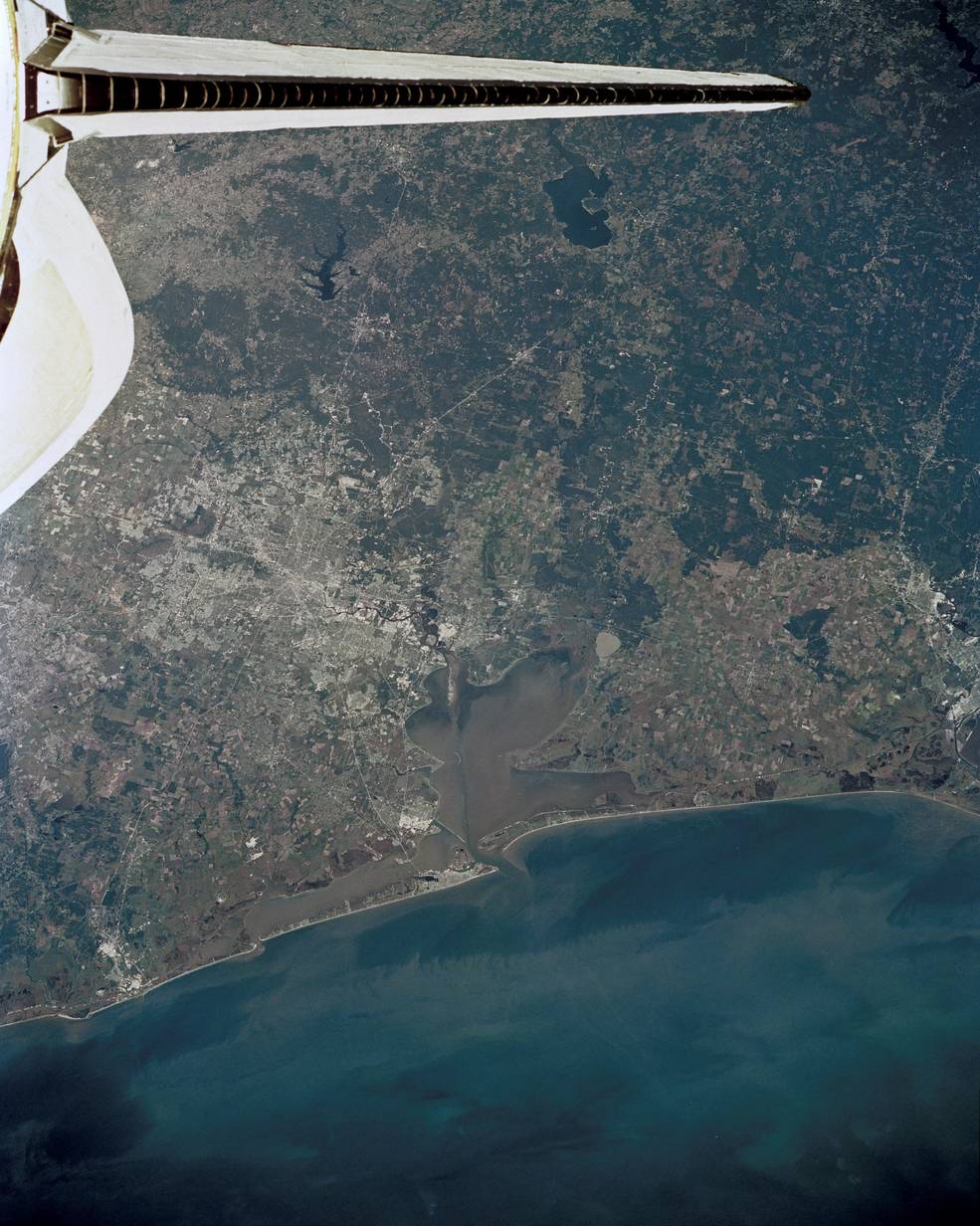
Left: Inflight photo of the STS-51J crew in the shuttle’s middeck. Clockwise from top, David C. Hilmers,
Karol J. “Bo” Bobko, William A. Pailes, Robert L. Stewart, and Ronald J. Grabe. Middle: Pailes with a
camera for Earth observations. Right: View of Houston from STS-51J.
On Oct. 7, 1985, the astronauts closed Atlantis’ payload bay doors in preparation for reentry. They fired the shuttle’s orbital maneuvering engines to slow the vehicle’s velocity and began the descent back to Earth. Bobko guided Atlantis to a smooth landing at Edwards AFB, completing a flight of 4 days, 1 hour, and 45 minutes. The crew had traveled 1.7 million miles and completed 64 orbits around the Earth. The first flight of Atlantis completed the original four-orbiter Shuttle fleet of reusable vehicles.
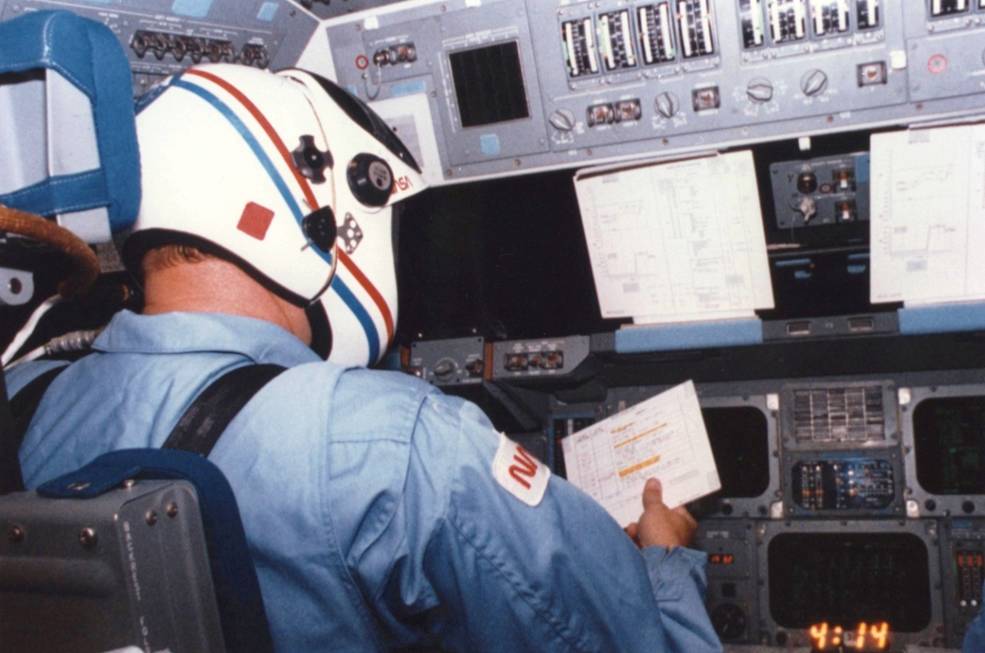
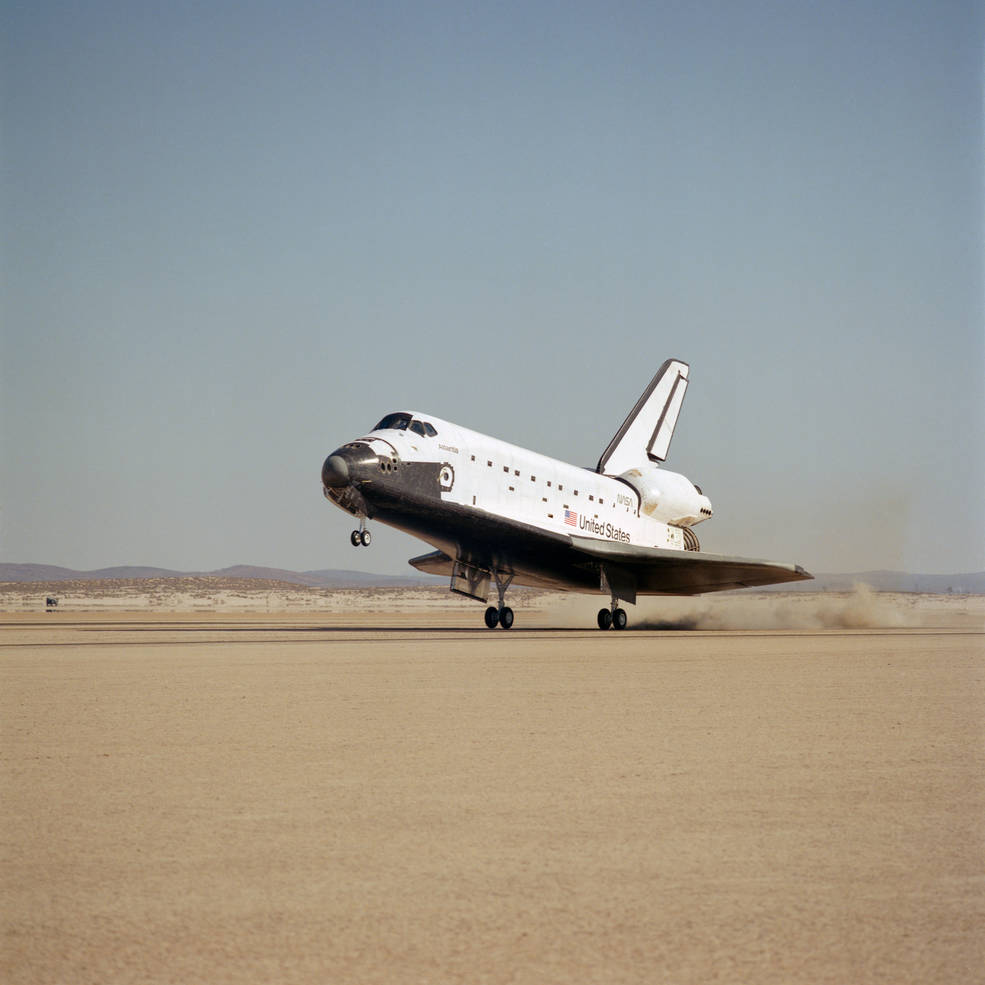
Left: STS-51J Commander Karol J. “Bo” Bobko preparing for Atlantis’ reentry. Right: Space shuttle Atlantis makes a perfect landing at Edwards Air Force Base to end the STS-51J mission.
Read commander Bobko’s recollections of the STS-51J mission in his oral history with the JSC History Office.

























